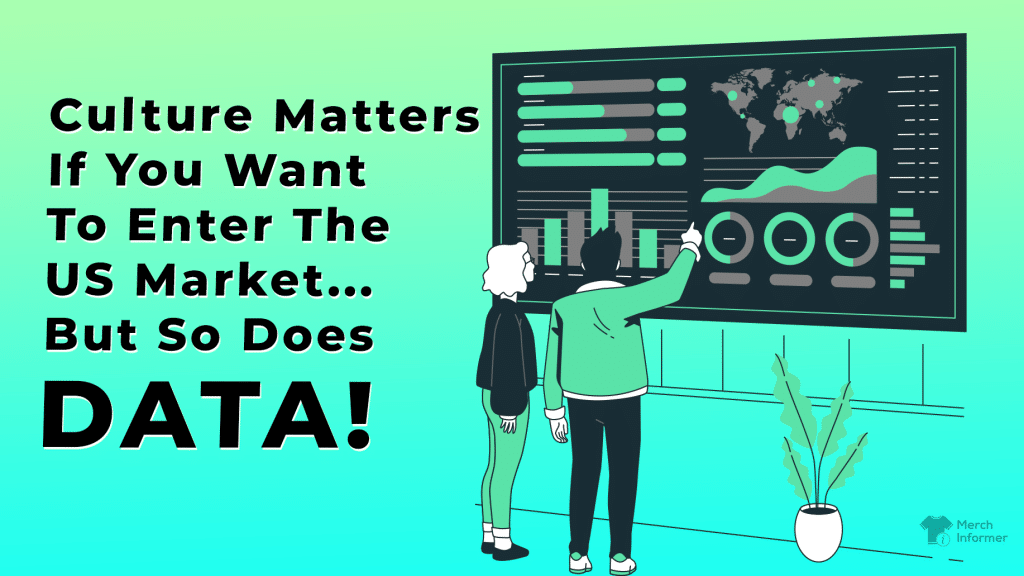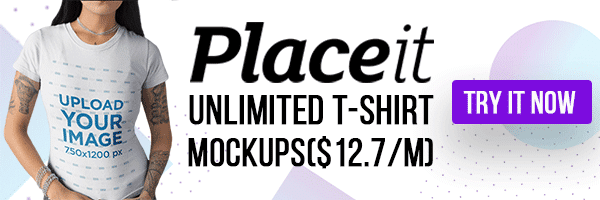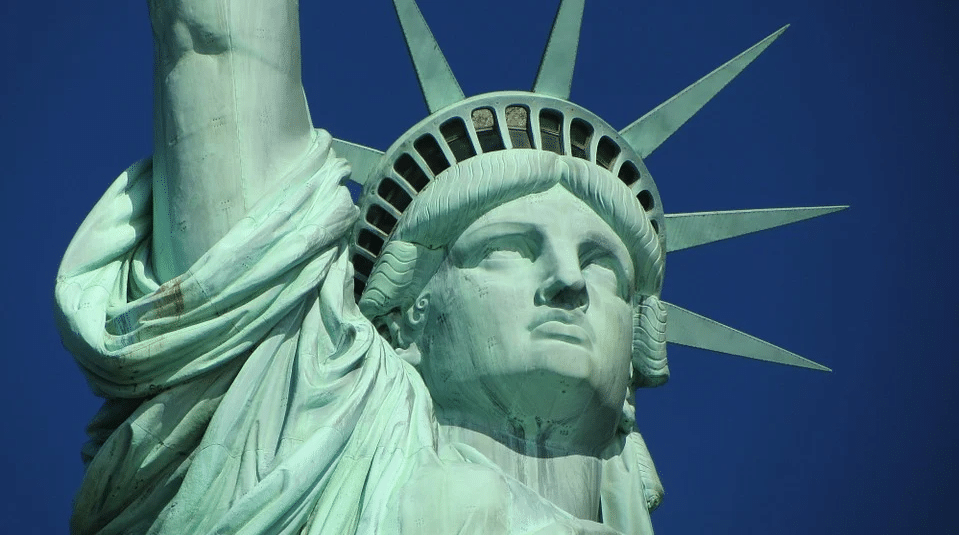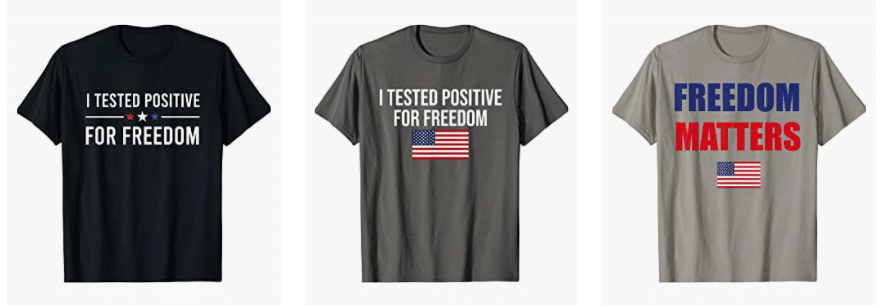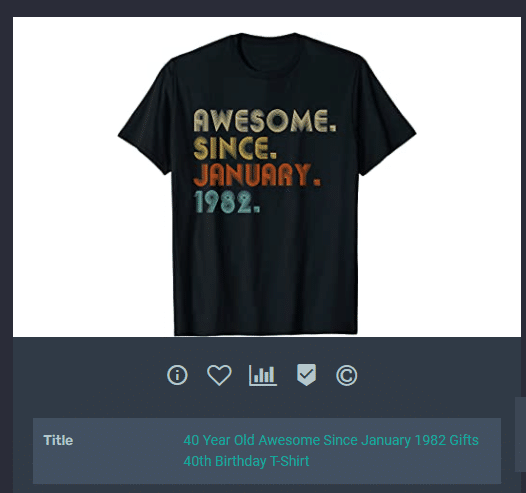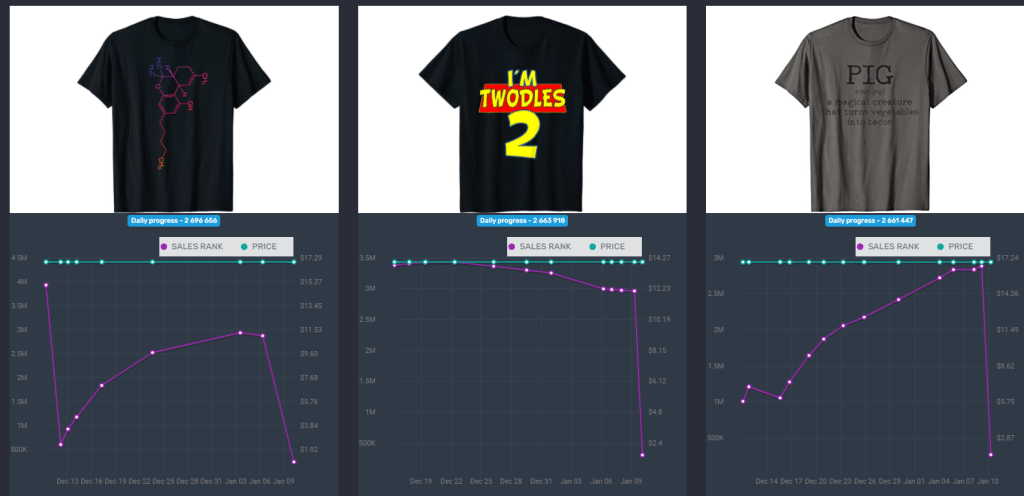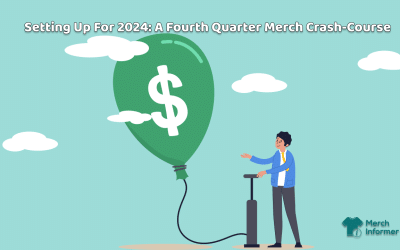Culture Matters If You Want To Enter The US Market…But So Does Data
Facts are facts: the USA is a geographically large and prosperous country.
A melting pot of cultures, nowhere is this illustrated more profoundly than in the fact that Americans speak over 430 languages, 176 of which are indigenous. What’s also staggering is that although the US population is around 329.5 million, Amazon gets over 200 million monthly visitors. This makes it the most heavily trafficked e-commerce site in the US.
Does this present an opportunity for artists from the rest of the world to market their designs? You bet!
In fact, Amazon accepts designs from artists and sellers from 102 countries around the world, creating an opportunity for creators in less developed countries to enter the US market, and gain recognition for their work, while earning an income at the same time.
But in order to do that, you first need to get the right market data and understand the specifics of American culture.
Defining American Culture
Defining American culture is difficult. With 50 states and so many different cultural and religious diversities out there, it’s not a very smart idea to pin American culture to a couple of things alone.
Yet, there are some common themes that do emerge and artists from foreign countries should take heed of those.
Starting with the broader aspects, American culture includes both conservative and liberal elements. Free expression is prized as is the element of materialism and gain. Americans also prefer the large and luxurious as opposed to being practical, compact, and concise. They enjoy sports and competition, engage in small talk (something that people in countries like Germany and Japan avoid doing, especially at the checkout counter), and value their independence.
Speaking of independence, “individual achievement is valued over group achievement” and people are often encouraged to rely on themselves as opposed to on others. This may have something to do with the much sought-after American Dream.
Apart from independence, Americans prize privacy, equality, timeliness and punctuality, informality, achievement, directness, and being future oriented.
In terms of consumer culture, there’s a strong emphasis that’s placed on customer-first experiences in retail stores. The same holds true for those wishing to sell in the e-commerce space.
American Consumer Culture
With so much diversity in one country, it’s also bound to lead to diversity in terms of consumer culture. In fact, there are around 14 main consumer types that can be defined. If you’re aware of these, you’ll know how to hone in on your specific niche and target more effectively.
Without further ado, here they are according to Simplicable:
- Conspicuous consumption: This type of consumption or purchasing decision is driven by the desire to impress through signaling social status. This is done through the display of wealth or being fashionable.
- Conspicuous conservation: A way of making purchasing decisions based on the idea that one is a good person if they display interest and participation in social or environmental causes.
- Early adopters: Being at the forefront of purchasing newly launched items and following product trends. Social status may or may not be important to this type of consumer.
- Followers: Consumers who have a fear of missing out (FOMO). They may follow early adopters quite closely and then “mimic their consumer behavior.”
- Low tech: This group enjoys and revels in “old technology,” and thinks of itself as unaffected by new trends.
- Peak experiences: This type of consumerism is defined by the idea that the subject of one’s consumption is what defines them (think hobbies).
- Escapism: These consumers base their purchasing decisions on the merit of the fictional worlds and realities they enjoy immersing themselves in (think Star Wars or Lord of the Rings).
- Traditional culture: A consumer who finds added value in products, services, or brands, which aspire to traditions (think history and national culture).
- Super culture: This can also be explained as global culture and pertains to consumers who identify with huge international brands in all domains – from World of Warcraft to Nike.
- Subculture: This is the opposite of super culture. Consumers here adopt micro brands to differentiate themselves from the mainstream. Think of them as tribes.
- Normcore: This is a group of people who do not wish to send strong social signals and simply want to be seen as run-of-the-mill and normal.
- Brand aversion: Then there’s a group of people who do not view labels positively and choose to steer away from purchasing branded items.
- Brand indifference: These are the pragmatists. They consume products based on their practical application or competitive pricing.
- Anti-consumers: The extreme version of brand indifference, this group takes pride in their total disregard of brands and consumer signaling.
So, what does this have to do with t-shirt design and foreign artists selling on the US market?
Quite a lot actually.
These subgroups of American consumer culture types and who a Seller wishes to target on Amazon will determine whether you sell haute couture, designer brands, bespoke apparel, or street fashion, to name a few.
Successful T-Shirt Niches On Amazon
Paying attention to the American consumer type is a great way to niche down and sell trendy t-shirts. But what are some of the most popular t-shirt niches with a low best sellers rank (BSR)?
Let’s dig a bit deeper.
For starters, K-pop merchandise is a huge category as South Korea’s K-pop stars are incredibly popular. This presents a clear opportunity for t-shirt designers and sellers. There’s currently little competition in this niche and poor listing quality. This means the Amazon listings will be easy to outrank. Just remember; be sure not to infringe on copyrighted materials. Be original and unique.
Apart from K-pop, you can also venture into some anticipated trends for 2022. These include bohemian t-shirts and prep school/golfing/country club t-shirts known as the “preppy” style. Then there are the trendy t-shirts, vintage, and sporty ones.
However, the top nine non-branded niches you might consider investing in are: humor, politics, gaming, fishing, cats, school, anime, birthday, and family.
Just remember that these niches will change over time depending on demand. It’s always worthwhile to do fresh research into successful niches with low BSR’s and high search volumes.
So, how can you get started?
Naturally, we recommend Merch Informer, and here’s why.
How Merch Informer Helps With Niche Searches
Merch Informer lets you access over 12 million designs across three marketplaces (US, UK and DE). It enables sellers to get into trending and evergreen niches before anyone else. It also grants access to analytics, such as product history, rank, and price changes. Plus, the business intelligence software helps Sellers perform immediate competition and niche difficulty checks with the patented technology.
Here are just some of the things that aspiring Amazon artists can do with Merch Informer:
- Master the listing process through a browser extension
- Access historical data through the data archives to help you see what was trending before
- Keep track of your processes
- Optimize listings
- Enjoy graphic packs
- Take your research beyond Amazon!
Conclusion
Culture is a hard thing to pin down, especially in a country as large and diverse as the US. Yet, whatever consumer type you choose to market to, your listings on Amazon can be successful if you use our tool to help you gather, analyze, and utilize Amazon’s data to your advantage.
